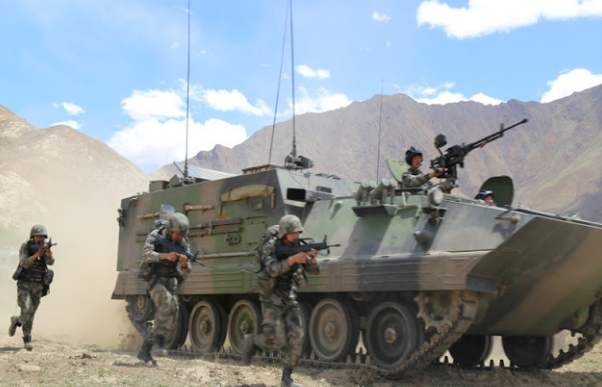
(TibetanReview.net, Sep30’20) – China’s foreign ministry has made it clear in a statement to the Hindustan Times, which the newspaper reported on Sep 29, that it stood by the Line of Actual Control (LAC) proposed by its then premier Zhou Enlai to his Indian counterpart Jawaharlal Nehru in a letter in 1959. India has rejected it at once, calling it unilateral and pointing out that it had never accepted it while bilateral discussions about defining it has been ongoing for years.
In a sternly worded statement, India’s Ministry of External Affairs spokesman Anurag Srivastava has said: “India has never accepted the so-called unilaterally defined 1959 LAC. This position has been consistent and well known, including to the Chinese side.”
“India has never accepted the 1959 LAC. Not at the time it was brought up in 1959, not after the 1962 war when it was referred to in the unilateral ceasefire announced by China, or at any time after that. By referring to this, they seem to indicate that disengagement is unlikely,” hindustantimes.com Sep 30 quoted former Northern Army commander Lieutenant General DS Hooda (retd) as saying.
Hooda has also pointed out: “Even as per the Chinese interpretation of the 1959 line, the LAC runs through Patrolling Point 14 in Galwan valley. But the Jun 15 skirmish took place 800 metres west of their own claim line. Their intention is to grab territory.”
The report also cited two serving Indian Army officers as saying the Chinese People’s Liberation Army (PLA) had gone beyond its own so-called claims of 1959 in the Galwan valley and triggered a deadly skirmish there on Jun 15 resulting in 20 Indian and an unspecified number of Chinese deaths.
It quoted one of the officers as saying: “The PLA claim has shifted to Nala junction or Y-junction where Galwan river meets the Shyok, which is 800 metres on the Indian side of China’s claim of 1959. In Apr 2020, the PLA objected to the construction of a bridge at the mouth of Galwan. This area was never contested and that’s why face-offs never took place here.”
But even the 1959 LAC proposed by China is said to lack sufficient clarity. “I don’t think there is any great clarity about the 1959 LAC. We do have some idea about their 1960 claim line, but a claim line does not automatically translate into the LAC,” Hooda has said.
“Over a period of the last 60 years, both countries have consolidated their hold over their own sides of the LAC. Areas where there are differing perceptions are also clearly known. This should form the basis for any negotiations and not some vague and undefined LAC that existed in 1959 when physical control by both sides was tenuous,” He has added.
China’s assertion that it abides by the LAC proposed by Premier Zhou Enlai to Prime Minister Jawaharlal Nehru (who rejected it) in 1959 has complicated the border row, the report said.
The timesofindia.com Sep 29 cited Srivastava as saying that under various agreements — 1993 Agreement on Maintenance of Peace and Tranquility along the LAC, 1996 Agreement on Confidence Building Measures in the Military Field, 2005 Protocol on Implementation of CBMs, 2005 Agreement on Political Parameters and Guiding Principles for Settlement of the India-China Boundary Question — China committed to a process of clarification of the LAC to reach a “common understanding” of the border.
Gautam Bambawale, former envoy to China, has said, “The problem here is that the LAC cannot be defined unilaterally. It was unacceptable to us in 1959. It is unacceptable to us in 2020.”





